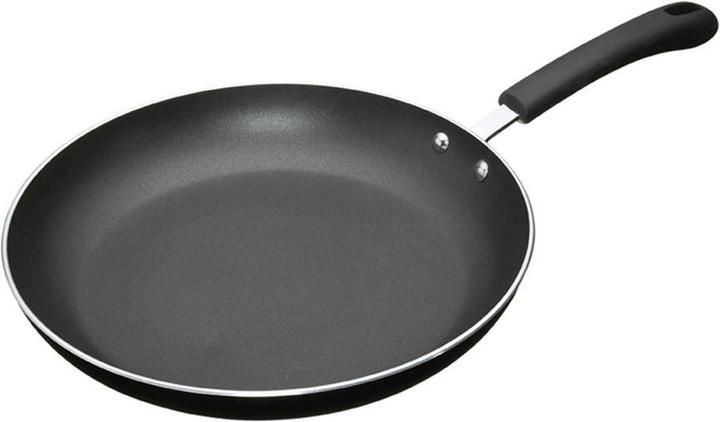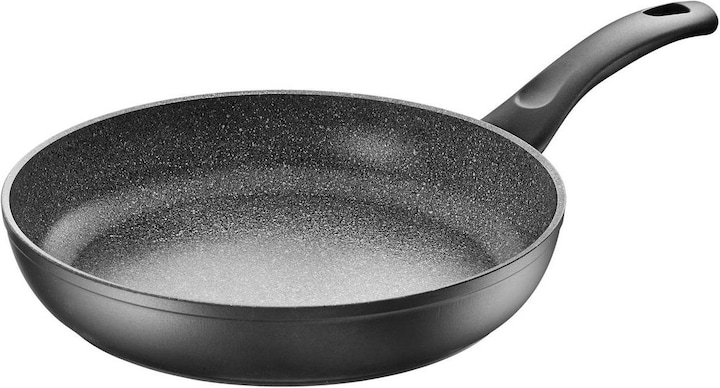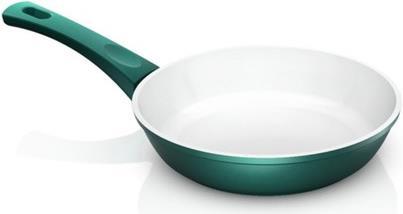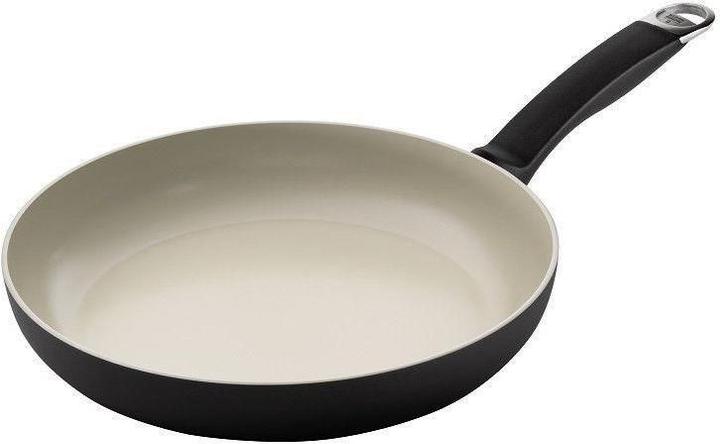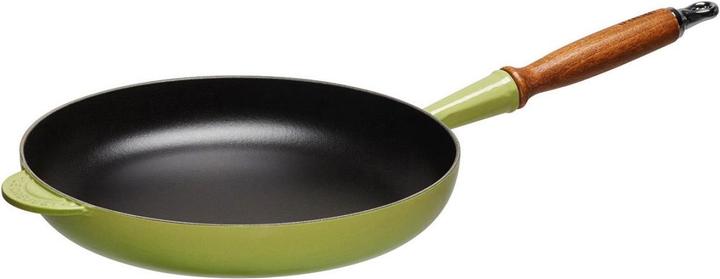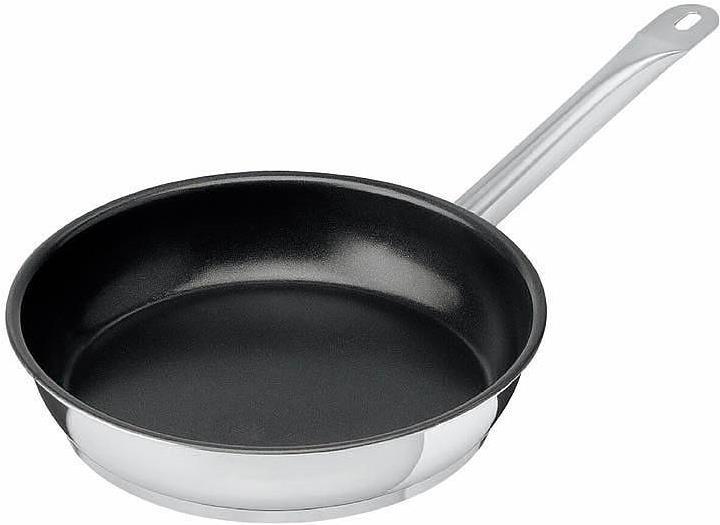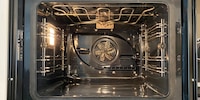

Pangate – from coatings to my aversion to Teflon
Enough is enough. For the last 14 years I’ve had to replace my pans every second or third year. Want to know why? Because they contained what was once much-lauded technology. They all came with a polytetrafluorethylene coating – commonly known as Teflon. However, I now see that as just being a means to an end. I smell a Teflon conspiracy.
Thanks to their great non-stick properties, Teflon pans let you cut out oil and fat almost completely. While that’s commendable, it’s important to remember that our bodies need certain fats to absorb things like vitamins. Apart from which, have you tried butter rösti, the Swiss potato dish, without butter? And how do you like your meat fried in water? Didn’t think so…
Just wood and silicon
I promise I never used metal kitchen utensils on my Teflon pans. And I always washed them up by hand, as I knew the dishwasher could also mess up the coating. Despite that, I still seem to have ridiculously bad luck, as I ended up with duff pans every time.
The Teflon coating would always start to peel off. That’s when the low-fat diets were over. Let’s face it, you can’t fry eggs unless you’re partial to burnt bits or if you get a kick out of soaking your pan for hours in the sink.
Frying pan coatings at a glance

Last December I decided once and for all I would kick the Teflon habit – no more Teflon pans for me. I wasn’t just doing it for the sake of my sanity and to appease my wallet, but also because I didn’t want to fill the world with more scrap metal.
At that time, though, I had no idea what alternatives there were, what the coatings did or how deep I’d have to dig into my pocket to pay for them.
Now that I’m a lot wiser, I thought I’d share my new-found knowledge to help you choose the right frying pan.
Non-stick coating
See more non-stick pans here.
Description:
Non-stick coatings are polymers (chemical materials) that are made of macromolecules. The best known non-stick coating is Teflon (PTFE), which you’ll find out more about below and can pick up in our online shop. Perfluoroalkoxy (PFA) and fluoroethylen-propylene (FEP) have similar properties to Teflon and are used just as much in non-stick coatings.
Contains:
Aluminium, cast aluminium, stainless steel, iron/steel, cast iron, Silargan, titanium
Pros:
- Hardly anything sticks to this coating (very low surface tension). That means you can fry with almost no oil or fat.
- These coatings have both high static friction and high sliding friction.
- Easy to clean by hand.
Cons:
- Low mechanical resistance – metal utensils can damage the coating.
- Can only withstand temperatures of 200°C – 260°C. If the pan gets hotter, it will release toxic fumes.
- Not dishwasher-safe – dishwasher detergent can damage the coating.
- Only suitable for limited use in the oven.
Enamel
See more enamel pans here.
Description:
Enamel is made of an inorganic compound, which turns into a glassy solidified form at high temperatures. The mixture consists of glass-forming oxides (silicon dioxide, boron trioxide, sodium oxide, potassium oxide, aluminium oxide); opacifiers (titanium oxide, zirconium, molybdenum) and cobalt or nickel oxide (for bonding). Ceramic pigments (iron oxide pigments, chromic oxide, spinel) are then added afterwards.
Contains:
Aluminium, cast aluminium, stainless steel, iron/steel, cast iron
Pros
- Food doesn’t get glued to the pan (not non-stick, but stick-minimising).
- Scratch resistant – you can even use metal utensils while cooking.
- Long-lasting – today’s thin coat enamelling is flexible and shock resistant, meaning it’s unlikely to peel.
- Can withstand temperatures up to 450°C (also oven-safe).
- Prevents the coated metal corroding.
- Easy to clean – almost all modern enamelling is also dishwasher-safe.
- Environmentally friendly; no solvents or harmful substances were involved in the making of this. Enamel is also completely recyclable (as it can be melted down).
Cons:
- You need a bit more fat for frying than you do in Teflon and ceramic pans.
Granitium (Ballarini ceramic coating)
See more Ballarini ceramic-coated pans here.
Description:
The term Granitium is purely a marketing word invented by the Ballarini company. It’s essentially a type of ceramic coating.
Ceramic
See more ceramic-coated pans here.
Description:
Ceramic coatings come in black and white. The coating itself is a ceramic powder mixture made of silicate rock. It’s usually applied via a thermal spray process. The main components of ceramic are clay minerals, kaolin and feldspars.
Contains:
Cast aluminium, stainless steel, cast iron, ceramics, Silargan
Pros:
- It’s mostly as non-stick as Teflon (you can also fry with almost no fat).
- Good heat conduction – helps to fry food evenly.
- A lot of ceramic coatings are scratch and abrasion resistant. However, to err on the side of caution, it’s a good idea to avoid sharp items coming in contact with the pan.
- If you look after these pans well they’ll stand you in good stead.
- Can withstand temperatures up to 400°C (also oven-safe).
- You can clean it with a soft sponge, water and some washing-up liquid.
- Contains few to no toxic substances.
Cons:
- Most ceramic pans either aren’t dishwasher-safe at all or are only partly dishwasher-friendly. When you’re washing by hand, err on the side of caution and avoid aggressive cleaning agents and wire wool.
- The quality on the market varies dramatically. For instance, a ceramic pan can last a lifetime or just a year depending on the coating process.
- Light-coloured coatings can discolour quickly (aesthetic disadvantage).
Teflon
See all (Teflon) non-stick pans here.
Description:
Teflon (polytetrafluoroethylene) is a non-stick coating made of polymers (chemical substances), which consist of macromolecules.
Contains:
Aluminium, cast aluminium, stainless steel
Pros:
- Almost no food sticks to the pan (very low surface tension). That means you can fry with almost no oil or fat.
- This coating has both high static friction and high sliding friction.
- Easy to clean by hand.
Cons:
- Low mechanical resistance – metal utensils can damage the coating.
- Can only withstand temperatures up to 260°C. If the pan gets hotter, it will release toxic fumes.
- Not dishwasher-safe – dishwasher detergent can damage the coating.
- Only for limited use in the oven.
Titanium
See more titanium pans here.
Description:
The purpose of titanium hardening primers is to give the non-stick coating on aluminium pans a hard surface. If you’ve heard people say on TV cookery programmes that you can use metal utensils on a titanium-coated pan, please don’t listen to them. Using metal utensils can indeed damage the non-stick coating on the titanium layer, even if it’s not visible to the naked eye.
Contains:
Aluminium, cast aluminium
Pros:
See «non-stick coating» or «Teflon».
Cons:
See «non-stick coating» or «Teflon».
Uncoated pans
See more uncoated pans here.
Description:
Uncoated pans are ideal for frying at very high temperatures.You just need a bit of practice to get the hang of it. Interesting, it isn’t just professional chefs who are opting for uncoated pans; cooking enthusiasts are also taking the non-coated route. The appeal isn’t just in achieving the perfectly cooked steak but also in not having to worry about care instructions and looking after the pan in a special way. After all, if there’s no coating, there’s you can break.
Contains:
Cast aluminium, stainless steel, iron, steel, cast iron, ceramic, copper
Pros:
- Robust and long-lasting.
- No coating with potential to break.
- Suitable for frying at extremely high temperatures.
- Perfect for meat, roast potatoes and asian cuisine.
Cons:
- You need a lot of oil or fat for frying.
- There are no non-stick properties (to begin with).
- It takes practice to fry with an uncoated pan.
- If you don’t use it properly it’s hard to clean.
Hardness scale – hard, harder, diamond

To make the decision-making process a bit easier, it can help to see a direct comparison of the different material hardnesses. However, that can be tricky, as plastics are usually measured in Shore hardness, while minerals are placed on the Mohs scale.
Shore hardness
This hardness test is named after Albert Ferdinand Shore and is used to determine the hardness of elastomers and elastic polymers. The test methods vary slightly depending on the type of material. Teflon scored Shore D. In this test, a truncated cone with a round point is placed on the material at a predefined radius and opening angle. The depth of penetration is then used to calculate the Shore value. To put things in perspective, a value of 0 Shore refers to a hardness similar to water, while 100 Shore is used to describe steel.
Mohs hardness
If you want to ascertain the hardness of minerals, you need to use the Mohs scale. Friedrich Mohs started comparing minerals and ranking them by hardness 200 years ago. He was guided by the principle that «hard substances scratch soft ones». It was this research that gave birth to the Mohs scale, which goes from 0 to 10. Mohs 1 corresponds to something like talc, while Mohs 10 is used to describe diamonds.
Rock, paper, scissors
If we order the coatings according to the Shore and Mohs hardness scale, we get the following list:

Spoilt for choice
Finally, I can see light at the end of the tunnel. I’m really pleased I now know a thing or two about coatings. The problem is, it’s not just a case of picking the right coating; you also have to decide on the pan material.
How I made up my mind
Even though I’m a self-confessed bargain hunter, I’ve learnt that you can regret a rash budget buy of a frying pan within a few years. That’s why I weighed up my choices carefully this time. Which coating would best suit my needs? An uncoated pan was out of the question for me. I tried using one a few years ago and failed miserably.
I’d also given up on traditional non-stick coatings (PTFE, PFA and FEP) so all that left me was enamel and ceramic.
Enamel vs ceramic
Let’s take a closer look at how each of these coatings fare in the most important cooking tasks (in my kitchen). How do they differ?
Non-stick:
Ceramic wins over enamel in this match. But if you like cooking with fat (or struggle to put on weight), then this point doesn’t even come into play.
Scratch resistance:
Scoring a Mohs hardness of 5 – 6, the coatings give equally good protection against abrasion. If you’re still on the fence at this point, it might help to know enamel was slightly ahead here. That’s because there is supposed to be a greater difference in quality between ceramic manufacturers.
Cleaning:
It depends on the manufacturer as to whether ceramic coatings are dishwasher-safe or not. However, I’m pretty sure it’s fine to put enamel of all types in the dishwasher.
It looks like the final score is enamel 2:1 ceramic.
That’s why I went ahead and bought myself two new enamel pans.
Pan material
When it comes to enamel pans, you can choose between aluminium, cast aluminium, stainless steel, iron/steel and cast iron. Aluminium and cast aluminium pans have the advantage of being relatively light. Meanwhile, the other materials are quite heavy and require two hands to flip a crêpe. But that’s what makes them longer lasting and lends them better heat absorption. This in turn means you use less energy for frying.
If you like using pans for gratinating, you might want to consider the fact that these have a removable handle. As I only use my pan on the stove, this didn’t have any impact on my decision.
After much deliberation, I finally ordered these pans in January:
It was a bit frustrating that the suppliers didn’t have those pans in stock, meaning I had to wait two further months for them to arrive. But hands down I can say they were worth the wait. It was love from the first cooking experiment.
In the switchover from a lighter Teflon pan, I did make a few mistakes at the outset about how much heat I needed. But even the slightly burnt rösti was tasty.

The good news is, it only took me a few attempts to adjust to the new pans and to get used to adding a bit more fat.
Bon appétit!
I find my muse in everything. When I don’t, I draw inspiration from daydreaming. After all, if you dream, you don’t sleep through life.



